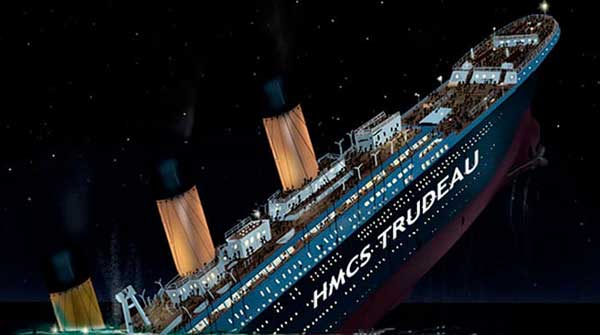By Jake Fuss
and Milagros Palacios
The Fraser Institute
Throughout its mandate, rather than acting to reduce the federal budget deficit, the Liberal government has made “investments” in the form of more and more spending.

Jake Fuss
Of course, this plan relies on a wave of good fortune – with positive economic growth and higher-than-expected revenues each year – to finance the government’s proclivity for spending.
However, recent information from the Parliamentary Budget Officer (PBO) and Statistics Canada casts serious doubt on the viability of this plan moving forward.
According to the PBO, the 2018-19 deficit in Ottawa will be $800 million higher than projected in the government’s latest budget released in March. The PBO projects a drop in expected revenues. So the government can’t count on its original revenue projections – let alone higher-than-expected revenues – to fund its penchant for spending.

Milagros
Palacios
But last year’s higher-than-anticipated deficit shouldn’t come as a surprise.
Prime Minister Justin Trudeau’s government has spent more money (on a per-person inflation-adjusted basis) than any prime minister in Canadian history. Federal per-person program spending reached an all-time high at $8,869 in 2018-19. The previous per-person high ($8,847) was recorded during the Great Recession in 2009.
More spending means more new debt. By the end of his term this fall, Trudeau will have increased federal debt by 5.6 per cent, which is more than any other prime minister who did not experience a world war or recession while in office. Trudeau is the only prime minister since 1895 to increase the per-person debt burden without presiding over a global conflict or economic downturn.
Four consecutive federal deficits have meant that each Canadian has acquired $1,725 more in federal debt since this government took office. Future generations will ultimately pay higher taxes to finance today’s debt growth.
What has this record accumulation of spending and debt brought us?
For starters, recent sluggish economic growth. StatsCan reveals that the Canadian economy contracted by 0.1 per cent in February. Falling resource production in mining and oil and gas caused those sectors to shrink for the sixth consecutive month. Output in the finance and manufacturing sectors dropped as well.
The economy has now shrunk in four of the past six months.
There’s now a heightened risk of recession in the near future. And that could pose serious problems for Canada’s fiscal situation.
In our recent study, we estimated that the federal deficit could eclipse $34 billion before any stimulus measures were introduced if an economic downturn occurred this year. And the negative effects on federal finances could last much longer.
Depending on the severity of the recession, the accumulated deficit over the next five years could total $115 billion to $142 billion. The debt burden for Canadians would continue to grow.
Massive and repeated spending increases, accompanied by rapidly accumulating debt, have defined this government’s fiscal policy. Clearly, it can’t continue down this path, hoping the good times will roll forever.
Economic growth is waning and government revenues won’t always exceed expectations. Trying to balance the budget on a wing and a prayer is destined for failure.
Jake Fuss and Milagros Palacios are economists at the Fraser Institute.
The views, opinions and positions expressed by columnists and contributors are the author’s alone. They do not inherently or expressly reflect the views, opinions and/or positions of our publication.


